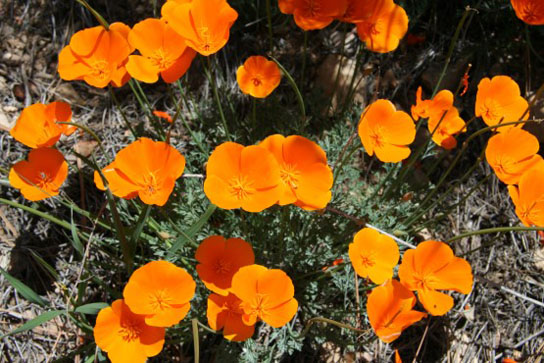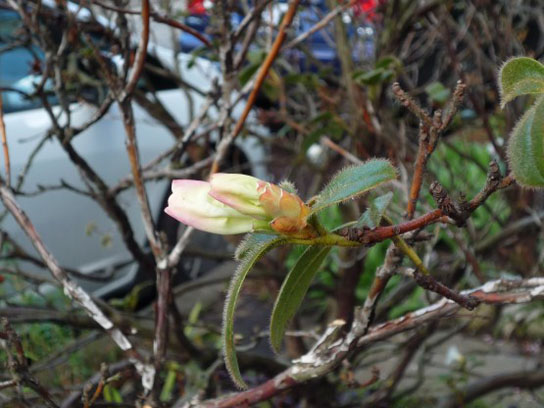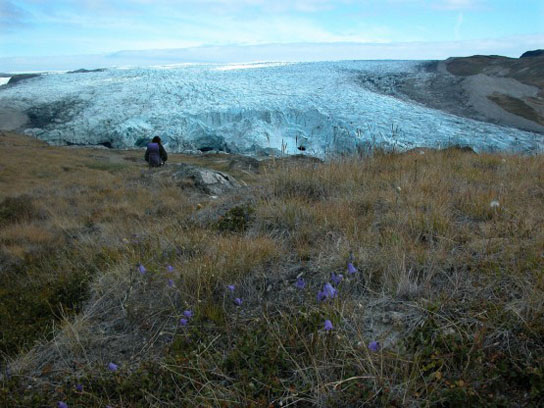
A new study from a team of biologists suggests that many wild plant species are feeling the effects of global warming, even the species that had been assumed to be stable and unresponsive to global warming. The researchers believe that about two-thirds of these stable species are sensitive to warmer springs and warmer winters, with the end result affecting the timing of leafing, budding or blooming.
Far more wild plant species may be responding to global warming than previous large-scale estimates have suggested. That’s the conclusion of a team of scientists, which included a UC San Diego biologist, that found that many plant species, which appear to not be affected by warmer spring temperatures, are in fact responding as much to warmer winters. The scientists detailed their findings in this week’s early online publication of the journal Proceedings of the National Academy of Sciences.
For years, scientists have accepted that certain species are flowering earlier each year due to changes in climatic conditions, but many species—varying around 30 percent, depending upon the region—appeared not to be affected. These species had been assumed to be stable—unresponsive to global warming and thus outside of concern for how they will change with increasing rates of climate change. But the team of researchers, led by Benjamin Cook, a climate modeler at the NASA Goddard Institute for Space Studies and Columbia University’s Lamont-Doherty Earth Observatory, found that the apparently stable species are, in fact, unquestionably feeling the effects of rising temperatures throughout the year.
“Based on what we know from agriculture and plant physiology, we expect our results would be broadly applicable to many temperate regions where species are dormant in usually cold winters,” said Elizabeth Wolkovich, who co-authored the study while a postdoctoral fellow in biology at UC San Diego. “We expect that our results extend to many temperate habitats in Southern California, but we need more data for the best estimates and predictions of what future California springs will look like.”

The study was part of efforts by a multi-national working group team, carried out at the National Center for Ecological Analysis & Synthesis, to better predict how plant leafing and flowering has and will continue to change with warming. The research team—which included Camille Parmesan of University of Plymouth’s Marine Institute in the UK—used data collected by citizen scientists in England and the United States to show that many species (about 10 to 18 percent of species studied) advance their flowering with warmer springs, as have been previously found, but also delay warming with warmer winters—a so-called “chilling requirement.”
Many of the species that have not appeared to be altering their spring timing in recent years need cold winters to “tell” them when to become dormant and when to “wake up” in spring. With winters getting warmer, these species appear to be “waiting” for their cold cue, which can end up delaying their normal responses to the arrival of spring. The end result is species that show no change, or even a delay, in spring budding, leafing or blooming, in apparent contradiction with warming spring temperatures.
This new study resolves that contradiction for many species, indicating about two-thirds of “stable” species are, in fact, sensitive to warmer springs, but even more so to warmer winters, with the end result being a confusion in timing of leafing, budding or blooming.

“We’ve known about the need for cold winters to meet chilling requirements for many well-studied crop and lab species for a long time,” said Cook. “But this is the first study to estimate how prevalent chilling requirements may be in wild plant communities and – further, to link to how plants change with global warming.” The scientists say further research is needed to figure out how such species will respond with continuing warmer winters and springs.
“The little data we have from other research suggests that species that do not meet their chilling requirements—which is a highly possible outcome of global warming—may flower erratically, that is far too early, or late or not at all,” said Wolkovich, who is now at the University of British Columbia. “Right now these species appear to have not changed much over time, but all our understanding of basic plant physiology suggests they will shift their flowering dramatically in the future.”
“The key for future research will be understanding how we can predict what species and regions are most at risk of radical changes in their flowering due to warmer winters,” she added. “For that, we need far more data, especially from areas with few data—temperate regions throughout the US West, but especially in Southern California are some of the areas where we have almost no data on when species leaf and flower and how it has changed in recent decades. People can help by joining an observer network such as the National Phenology Network (http://www.usanpn.org/participate/observe) or asking about opportunities at their local botanical clubs or natural history museums.”
Reference: “Divergent responses to spring and winter warming drive community level flowering trends” by Benjamin I. Cook, Elizabeth M. Wolkovich and Camille Parmesan, 21 May 2012, Proceedings of the National Academy of Sciences.
DOI: 10.1073/pnas.1118364109